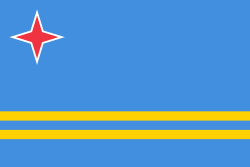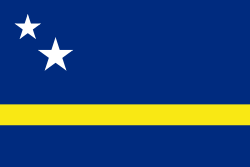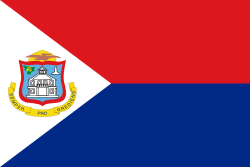Financial Action Task Force
The Financial Action Task Force (on Money Laundering) (FATF), also known by its French name, Groupe d'action financière (GAFI), is an intergovernmental organisation founded in 1989 on the initiative of the G7 to develop policies to combat money laundering.[2] In 2001, its mandate was expanded to include terrorism financing.
 | |
| Abbreviation | FATF |
|---|---|
| Formation | 1989 |
| Type | Intergovernmental organisation |
| Purpose | Combat money laundering and terrorism financing |
| Headquarters | Paris, France |
Region served | Worldwide |
Membership | 39 |
Official language | English, French |
President | Marcus Pleyer[1] |
| Affiliations | Asia/Pacific Group on Money Laundering (APG),
Caribbean Financial Action Task Force (CFATF), Financial Action Task Force on Money Laundering in South America (GAFISUD), Middle East and North Africa Financial Action Task Force (MENAFATF) |
| Website | www |
The objectives of FATF are to set standards and promote effective implementation of legal, regulatory and operational measures for combating money laundering, terrorist financing and other related threats to the integrity of the international financial system. FATF is a "policy-making body" that works to generate the necessary political will to bring about national legislative and regulatory reforms in these areas.[3] FATF monitors progress in implementing its Recommendations through "peer reviews" ("mutual evaluations") of member countries.
Since 2000, FATF has maintained the FATF blacklist (formally called the "Call for action") and the FATF greylist (formally called the "Other monitored jurisdictions").[4][5][6][7]
History
FATF was formed by the 1989 G7 Summit in Paris to combat the growing problem of money laundering. The task force was charged with studying money laundering trends, monitoring legislative, financial and law enforcement activities taken at the national and international level, reporting on compliance, and issuing recommendations and standards to combat money laundering. At the time of its formation, FATF had 16 members, which by 2016 had grown to 37.
In its first year, FATF issued a report containing forty recommendations to more effectively fight money laundering. These standards were revised in 2003 to reflect evolving patterns and techniques in money laundering.
The mandate of the organisation was expanded in 2001 to include terrorist financing following the September 11 terror attacks.
FATF Secretariat
The FATF Secretariat is located at the OECD headquarters in Paris.
Since November 2015, the FATF Secretariat has been led by the Executive Secretary David Lewis.[8]
FATF Recommendations
Creation and ongoing maintenance
Together, the Forty Recommendations on Money Laundering and eight (now nine) Special Recommendations on Terrorism Financing set the international standard for anti-money laundering measures and combating the financing of terrorism and terrorist acts. They set out the principles for action and allow countries a measure of flexibility in implementing these principles according to their particular circumstances and constitutional frameworks. Both sets of FATF Recommendations are intended to be implemented at the national level through legislation and other legally binding measures.[9] There are multiple groups to organise the Recommendations; AML/CFT Policies and Coordination, Money Laundering and Confiscation, Terrorist Financing and Financial of Proliferation, Preventive Measures, Transparency and Beneficial Ownership of Legal Persons and Arrangements, Powers and Responsibilities of Competent Authorities and other Institutional Measures, and International Cooperation.[10]
In February 2012, the FATF codified its recommendations and Interpretive Notes into one document that maintains SR VIII (renamed Recommendation 8), and also includes new rules on weapons of mass destruction, corruption and wire transfers (Recommendation 16).[11]
Forty recommendations on money laundering
The FATF's Forty Recommendations on money laundering of 1990 are the primary policies issued by FATF [12] and the Nine Special Recommendations (SR) on Terrorism Financing (TF).[13] The Recommendations are seen globally as the world standard in anti-money laundering as well many countries have made a commitment to put the Forty Recommendations in place. The Recommendations cover the criminal justice system and law enforcement, international co-operation, and the financial system and its regulation.[14] The FATF completely revised the Forty Recommendations in 1996 and 2003.[12] By 1996 the Recommendations had to be updated to include more than just drug-money laundering, as well as to keep up with changing techniques.[15] The 2003 Forty Recommendations require states, among other things, to:
- Implement relevant international conventions
- Criminalise money laundering and enable authorities to confiscate the proceeds of money laundering
- Implement customer due diligence (e.g., identity verification), record keeping and suspicious transaction reporting requirements for financial institutions and designated non-financial businesses and professions
- Establish a financial intelligence unit to receive and disseminate suspicious transaction reports, and
- Cooperate internationally in investigating and prosecuting money laundering
NINE Special Recommendations on Terrorism Financing
The FATF has issued Special Recommendations on Terrorist Financing. In October 2001 the FATF issued the original eight Special Recommendations on Terrorism Financing, following the September 11 terrorist attacks in the United States. Among the measures, Special Recommendation VIII (SR VIII) specifically targeted non-profit organisations. This was followed by the International Best Practices Combating the Abuse of Non-Profit Organisations in 2002, released one month before the U.S. Department of Treasury's Anti-Terrorist Financing Guidelines, and the Interpretive Note for SR VIII in 2006. A ninth Special Recommendation was added later.[15] In 2003 the Recommendations, as well as the 9 Special Recommendations were adjusted for the second time.[15] The Recommendations, and Special Recommendations were advocated by over 180 countries.[15]
Compliance mechanism
In February 2004 (Updated as of February 2009) the FATF published a reference document Methodology for Assessing Compliance with the FATF 40 Recommendations and the FATF 9 Special Recommendations.[16] The 2009 Handbook for Countries and Assessors outlines criteria for evaluating whether FATF standards are achieved in participating countries.[17] FATF evaluates a country’s performance based on its assessment methodology that covers: 1. technical compliance, which is about legal and institutional framework and the powers and procedures of the competent authorities, and 2. effectiveness assessment, which is about the extent to which the legal and institutional framework is producing the expected results.[18]
There are many differences between countries dealing with their legal and financial system, which is taking into consideration by the FATF. There is a set minimum of actions that meet a standard, that all countries can use regarding their own situation. This standard covers all actions that a nation should take within their regulatory systems and their criminal justice systems as well the preventive measures that should be taken by specified businesses, professions, and institutions.[19]
For non-profit organisations (NPOs) there has been a command for more financial transparency, to make sure that they do not become easier for terrorist organisations to launder money through the organisations. This hypothesis was thought of by intergovernmental organisations. These intergovernmental organisations include the World Bank, Organisation for Economic Co-operation and Development and the International Monetary Fund.[20] NPOs are put under surveillance, especially when they are associated with "suspect communities" or if they are based or working in zones of conflict.[21]
FATF data is a key indicator of the quality of AML/CFT systems in the Basel AML Index, a money laundering and terrorist financing risk assessment tool developed by the Basel Institute on Governance.
Black or greylisting of non-compliant nations
In addition to FATF's "Forty plus Nine" Recommendations, in 2000 FATF issued a list of "Non-Cooperative Countries or Territories" (NCCTs), commonly called the FATF Blacklist. This was a list of 15 jurisdictions that, for one reason or another, FATF members believed were uncooperative with other jurisdictions in international efforts against money laundering (and, later, terrorism financing). Typically, this lack of cooperation manifested itself as an unwillingness or inability (frequently, a legal inability) to provide foreign law enforcement officials with information relating to bank account and brokerage records, and customer identification and beneficial owner information relating to such bank and brokerage accounts, shell company, and other financial vehicles commonly used in money laundering. As of October 2006, there are no Non-Cooperative Countries and Territories in the context of the NCCT initiative. However FATF issues updates as countries on High-risk and non-cooperative jurisdictions list have made significant improvements in standards and cooperation. The FATF also issues updates to identify additional jurisdictions that pose Money Laundering/Terrorist Financing risks.[22]
The FATF surveyed 26 jurisdictions to check their ability and willingness to co-operate with other countries in the international fight against money laundering. The review contained the summaries of these surveys. Fifteen jurisdictions were branded “non-cooperative countries or territories,” because of the high number of harmful practices identified in these jurisdictions.[23]
Categories of members
As of June 2019 there are 37 member countries of FATF. Starting with its own members, the FATF monitors countries' progress in implementing the FATF Recommendations; reviews money laundering and terrorist financing techniques and counter-measures; and, promotes the adoption and implementation of the FATF Recommendations globally.[24] Countries are subjected to evaluation by FATF to see that they are upholding laws and regulations enforced by FATF.
Full members
As of 2019 FATF had 39 full members, comprising 37 member jurisdictions and two regional organisations. The FATF also works in close co-operation with a number of international and regional bodies involved in combating money laundering and terrorism financing.[25]
- Regional organisations
- Countries and other jurisdictions

.svg.png)

.svg.png)

.svg.png)







.svg.png)




























Associate members
As of 2015 FATF had 8 associated FATF style regional members, that have similar objectives of setting up systems to fight terrorism and money corruption:[27]:
- Asia/Pacific Group on Money Laundering (APG)[28]
- Caribbean Financial Action Task Force (CFATF)[29]
- Eastern and Southern Africa Anti-Money Laundering Group (ESAAMLG)[30]
- Eurasian Group (EAG)[31]
- Council of Europe Select Committee of Experts on the Evaluation of Anti-Money Laundering Measures (Moneyval)(formerly PC-R-EV)[32]
- Financial Action Task Force of Latin America (GAFILAT), formerly The Financial Action Task Force on Money Laundering in South America (GAFISUD)[33]
- Inter-Governmental Action Group against Money Laundering in West Africa (GIABA)[34]
- Middle East and North Africa Financial Action Task Force (MENAFATF)[35]
FATF regional member delegates
Members of the FATF regional bodies that are not full FATF members are entitled to attend FATF meetings as individual member-delegates of the regional bodies and to intervene on policy and operational issues.
Observer members
30 countries and international organisations are observer organisations. These include the International Monetary Fund, the UN with six expert groups and the World Bank.[36]
Indonesia joined the group of observers that take part in upholding law against money laundering, terrorism and illegal funding. The international organisations recorded have, among other objectives, a specific anti-money laundering aim or function.[37]
- African Development Bank[37]
- Anti-Money Laundering Liaison Committee of the Franc Zone (CLAB) [French][37]
- Asian Development Bank[37]
- Basel Committee on Banking Supervision (BCBS)[37]
- Camden Asset Recovery Inter-agency Network (CARIN)[37]
- Egmont Group of Financial Intelligence Units[37]
- European Bank for Reconstruction and Development (EBRD)[37]
- Group of International Finance Centre Supervisors
- United Nations Office on Drugs and Crime (UNODC)[38]
- United Nations Counter-Terrorism Committee Executive Directorate (UNCTED)[38]
Evaluating members
There are still compliance issues in areas that might afford exploitative opportunities for transnational crime and terrorist networks. This can have detrimental effects on a country's national security through increasing risks of money laundering and financing of terrorism as well as wastage due to the implementation of inappropriate regulatory measures. The objective is to increase mitigation strategies that would enable scarce resources in fighting money laundering and terrorism financing threats.[39]
The FATF follows strict criteria to identify potential threats.[40]
Effects of FATF
The effect of the FATF Blacklist has been significant, and arguably has proven more important in international efforts against money laundering than has the FATF Recommendations. While, under international law, the FATF Blacklist carried with it no formal sanction, in reality, a jurisdiction placed on the FATF Blacklist often found itself under intense financial pressure.[41]
The FATF began to become a big figure shortly after the 9/11 attacks to help combat the financing of terrorist organisations. FATF makes sure funds are not easily accessible by terror organisations that are causing these crimes against humanity. FATF has helped to fight against corruption by ‘grey-listing’ countries that do not meet Recommended Criteria and this helps to cripple economies and states that are aiding terrorist and corrupted organisations.[42] FATF continues to work with other monetary agencies to control terrorist finance activity and to bring an end to illegal financial organisations, terrorism and corruption.
FATF has made it difficult for non-governmental organisations (NGOs) in countries to access funds to aid in relief situations due to strict FATF criteria. FATF criteria have mainly impacted NGOs that are located in Middle Eastern and terror-ridden countries. Some argue that the FATF Recommendations do not specifically set out restrictions for NGOs which often results in them going against FATF Recommendation.[43]
FATF style regional bodies
FATF also has associated FATF style regional bodies, including:
- Asia/Pacific Group on Money Laundering (APG)[44]
- Caribbean Financial Action Task Force (CFATF)[45]
- Eastern and Southern Africa Anti-Money Laundering Group (ESAAMLG)[46]
- Eurasian Group (EAG)[47]
- Council of Europe Select Committee of Experts on the Evaluation of Anti-Money Laundering Measures (Moneyval)(formerly PC-R-EV)[48]
- Financial Action Task Force of Latin America (GAFILAT), formerly The Financial Action Task Force on Money Laundering in South America (GAFISUD)[49]
- Inter-Governmental Action Group against Money Laundering in West Africa (GIABA)[50]
- Middle East and North Africa Financial Action Task Force (MENAFATF)[51]
GABAC (Central Africa)
See also
References
- "FATF – Presidency". FATF-gafi.org. Retrieved 2020-07-07.
- The FATF in the Global Financial Architecture: Challenges and Implications. International, Transnational & Comparative Law Journal. Social Science Research Network (SSRN). Accessed 4 April 2019.
- https://www.fatf-gafi.org/about/
- FATF nations, Full member nations, Observer nations, Call for action nations (Blacklisted nations), Other monitored jurisdictions (greylisted nations), FATF, accessed 24 October 2019.
- "About FATF". FATF. Retrieved 1 May 2018.
- The FATF in the Global Financial Architecture: Challenges and Implications. International, Transnational & Comparative Law Journal. Social Science Research Network (SSRN). Accessed 4 April 2019
- "FATF Works". FATF. Retrieved 1 May 2018.
- "FATF Secretariat - Financial Action Task Force (FATF)". www.fatf-gafi.org. Retrieved 2019-03-13.
- "National money laundering and terrorist financing risk assessment". FATF-GAFI. FATF-GAFI. Retrieved 25 June 2015.
- "International Standards on Combating Money Laundering and the Financing of Terrorism & Proliferation" (PDF). fatf-gafi.org. October 2018.
- "INTERNATIONAL STANDARDS ON COMBATING MONEY LAUNDERING AND THE FINANCING OF TERRORISM & PROLIFERATION. FATF Recommendations" (PDF). FATF/OECD. p. 130. Retrieved 23 March 2015.
- Archived August 14, 2006, at the Wayback Machine
- Archived August 13, 2006, at the Wayback Machine
- Johnson, Jackie (2008). "Third round FATF mutual evaluations indicate declining compliance". Journal of Money Laundering Control. 11 (1): 47–66. doi:10.1108/13685200810844497.
- "International Standards on Combating Money Laundering and the Financing of Terrorism & Proliferation" (PDF). fatf-gafi.org. October 2018.
- "Methodology for Assessing Compliance with the FATF 40 Recommendations and the FATF 9 Special Recommendations" (PDF). FATF-GAFI.org. FATF-GAFI. Retrieved 25 June 2015.
- "AML/CFT Evaluations and Assessments" (PDF). FATF-GAFI. FATF-GAFI. Retrieved 25 June 2015.
- Pakistan on FATF’s grey list: what, why, and why now?, Dawn (newspaper), 10 June 2019.
- Salierno, David (2003). "FATF revisits money laundering". The Internal Auditor; Altamonte Springs. 60 (4): 16–19 – via ProQuest.
- Kenton, Will. "Financial Action Task Force (FATF)". Investopedia. Retrieved 2019-03-31.
- "Counter-Terrorism, "Policy Laundering," and the FATF: Legalizing Surveillance, Regulating Civil Society - IJNL Vol. 14 Iss. 1-2". www.icnl.org. Retrieved 2019-02-10.
- "High-risk and non-cooperative jurisdictions". FATF-GAFI. FATF-GAFI. Retrieved 25 June 2015.
- Stessens, Guy (2001). "The FATF 'Black List' of Non-Cooperative Countries or Territories". Leiden Journal of International Law. 14 (1): 199–207. doi:10.1023/a:1017946510335. ISSN 0922-1565.
- "FATF Members and Observers".
- "FATF Members and Observers". FATF. Retrieved July 4, 2019.
- "Welcoming the Kingdom of Saudi Arabia as a member to the FATF". FATF. Retrieved June 21, 2019.
- "What is FATF".
- "Asia / Pacific Group On Money Laundering". Asia / Pacific Group. Retrieved 23 March 2015.
- "Caribbean Financial Action Task Force". Caribbean Financial Action Task Force (CFATF). Retrieved 23 March 2015.
- "Eastern and Southern Africa Anti-Money Laundering Group-Home". Esaamlg.org. Retrieved 2015-07-02.
- "The Eurasian Group on Combating Money Laundering and Financing of Terrorism". Eurasiangroup.org. Retrieved 2015-07-02.
- "Moneyval". Coe.int. Retrieved 2015-07-02.
- "GAFILAT". Retrieved 22 March 2015.
- "GIABA - Welcome !". Giaba.org. Retrieved 22 March 2015.
- "MENAFATF Official Web Site". Menafatf.org. Retrieved 2015-07-02.
- "Members and Observers of FATF".
- "Members and Observers - Financial Action Task Force (FATF)". www.fatf-gafi.org. Retrieved 2019-04-07.
- barnabemusoni. "Counter-Terrorism Committee". United Nations Security Council Counter-Terrorism Committee. Retrieved 2019-04-07.
- Choo, Kim-Kwang Raymond (2013). "New payment methods: A review of 2010–2012 FATF mutual evaluation reports". Computers & Security. 36: 12–26. doi:10.1016/j.cose.2013.01.009.
- Stessens, Guy (2001). "The FATF 'Black List' of Non-Cooperative Countries or Territories". Leiden Journal of International Law. 14: 199–207. doi:10.1017/S0922156501000097.
- "Counter-Terrorism, "Policy Laundering," and the FATF: Legalizing Surveillance, Regulating Civil Society". The International Journal of Not-for-Profit Law. The International Journal of Not-for-Profit Law. Retrieved 25 June 2015.
- "The importance of urgent action to implement FATF's measures to counter terrorist financing and help defeat ISIL". www.fatf-gafi.org. Retrieved 2019-03-31.
- "Counter-Terrorist Financing and Humanitarian Security - World". ReliefWeb. Retrieved 2019-03-31.
- "Asia / Pacific Group On Money Laundering". Asia / Pacific Group. Retrieved 23 March 2015.
- "Caribbean Financial Action Task Force". Caribbean Financial Action Task Force (CFATF). Retrieved 23 March 2015.
- "Eastern and Southern Africa Anti-Money Laundering Group-Home". Esaamlg.org. Retrieved 2015-07-02.
- "The Eurasian Group on Combating Money Laundering and Financing of Terrorism". Eurasiangroup.org. Retrieved 2015-07-02.
- "Moneyval". Coe.int. Retrieved 2015-07-02.
- "GAFILAT". Retrieved 22 March 2015.
- "GIABA - Welcome !". Giaba.org. Retrieved 22 March 2015.
- "MENAFATF Official Web Site". Menafatf.org. Retrieved 2015-07-02.
=urther reading
- Hawala, An Informal Payment System and Its Use to Finance Terrorism by Sebastian R. Müller, December 2006, VDM Verlag, ISBN 3-86550-656-9, ISBN 978-3-86550-656-6
- Michael G. Findley, Daniel L. Nielson and J.C. Sharman (2013). "Using Field Experiments in International Relations: A Randomized Study of Anonymous Incorporation." International Organization, 67, pp 657-693
External links
- Official website
- Eurasian Group on Combating Money Laundering and Financing of Terrorism (EAG) FATF-Style Regional Bodies